JK1SXR
Snapshot 8 No.80-89
89. Late autumn
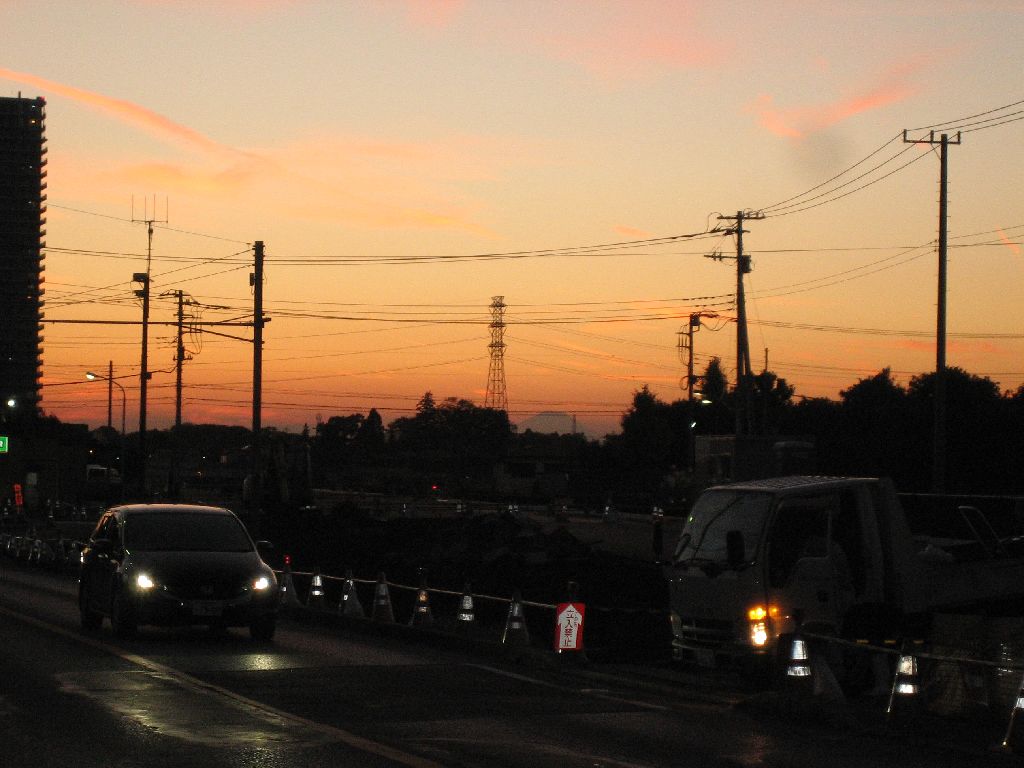 On my evening walk back home with my dog, Mt. Fuji unexpectedly appeared on the western horizon.
On my evening walk back home with my dog, Mt. Fuji unexpectedly appeared on the western horizon.
From this area, it is to be seen through the skies above Koutou-ku, Meguro-ku, Sagamihara-si. A map of 1 : 4x10^5 indicates 33 cm between here and Mt. Fuji. Namely, the direct distance shall be 33x4x10^5 cm = 33x4x10^3 m = 132 km.
It is amazing the air quality improved so much.
=2014-11-27 thu/canon ixi digi55=
88. Wood statue
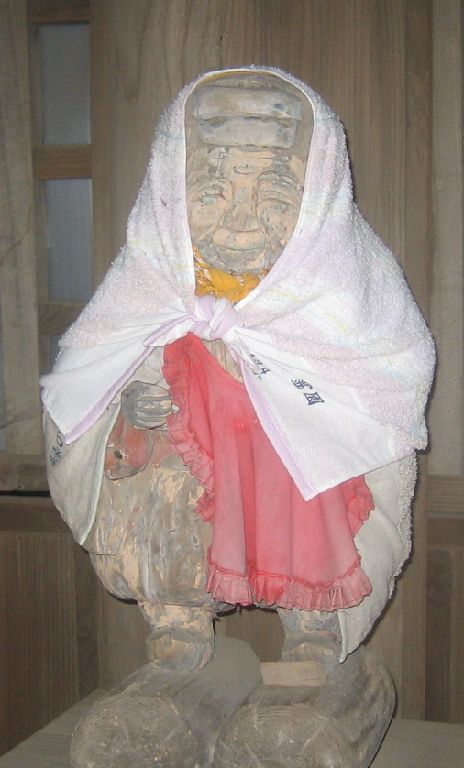 Went to a nearby Iino Kannon (a temple dedicated to Kannon bodhisattva).
Went to a nearby Iino Kannon (a temple dedicated to Kannon bodhisattva).
Though the Kannon image inside the hall can not be seen from outside, there esixt two carved wood figures, supposedly to serve the temple, at the right and left fronts. The photo is for the right one.
Although there might be an age-old reason to cover her head with a towel, a red beret or the like looks to fit her much more.。
=2014-10-17 /canon ixi digi55=
87. Sumida-river line
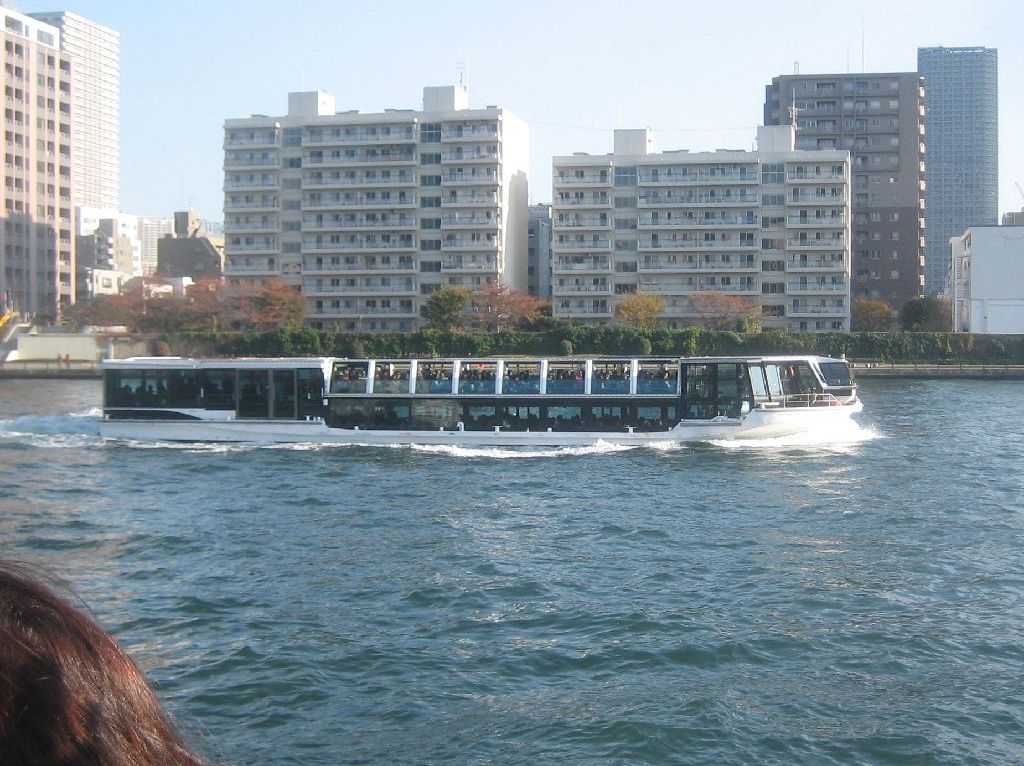 Fine weather brought us to Sumida-river cruise.
Fine weather brought us to Sumida-river cruise.
Water quality of the river seems getting better year by year.
=2014-11-23 sun/canon ixi digi55=
86. Hittuki-musi*

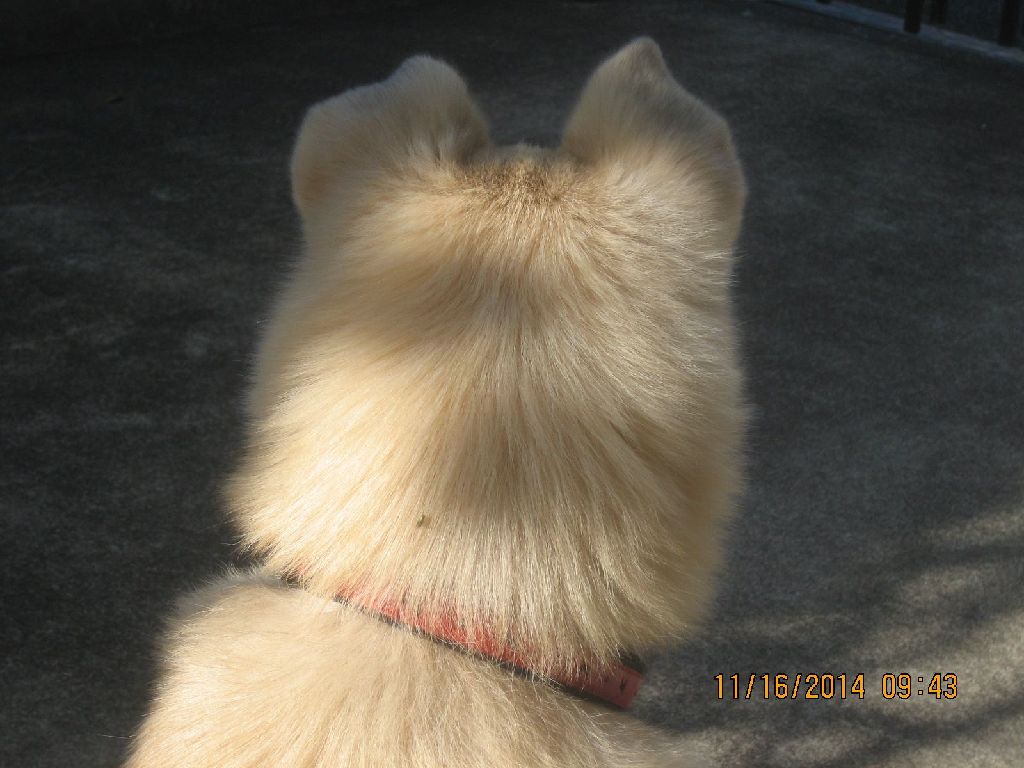
At this time of year, hittuki-musi invariably stick to my dog during walking.
This morning too, many of them stuck to his hair. Although I had tried to remove them all, still some were remaining.
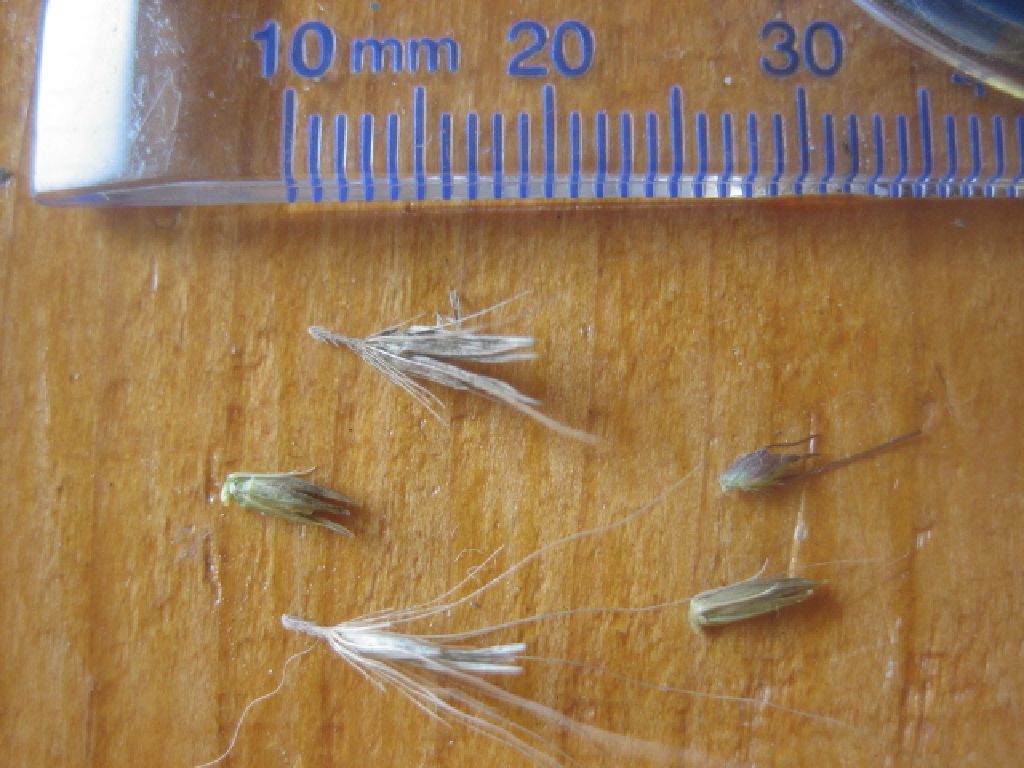 Five pieces were found and magnified through a lens.
Five pieces were found and magnified through a lens.
=2014-11-16 sat/canon ixi digi55=
* Hittuki-musi literally means "sticking bugs". They, of course, are not bugs at all, but seeds of particular herbaceous plants. Nevertheless, we call them hittuki-musi, especially among boys.
85. Preparation for winter
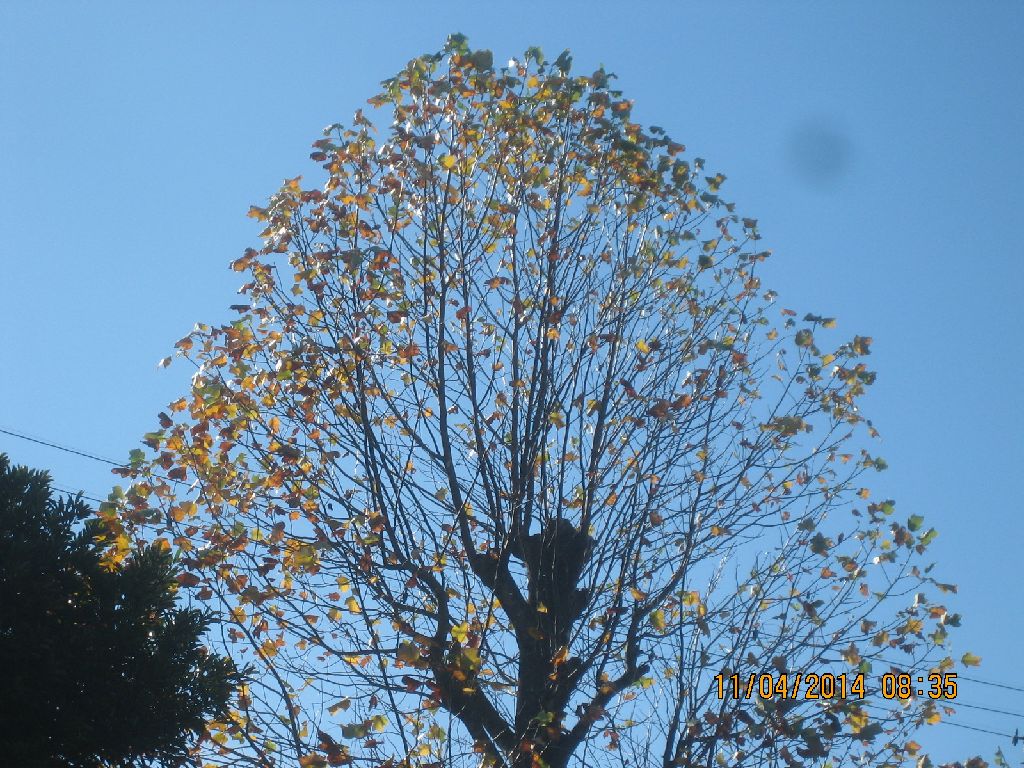
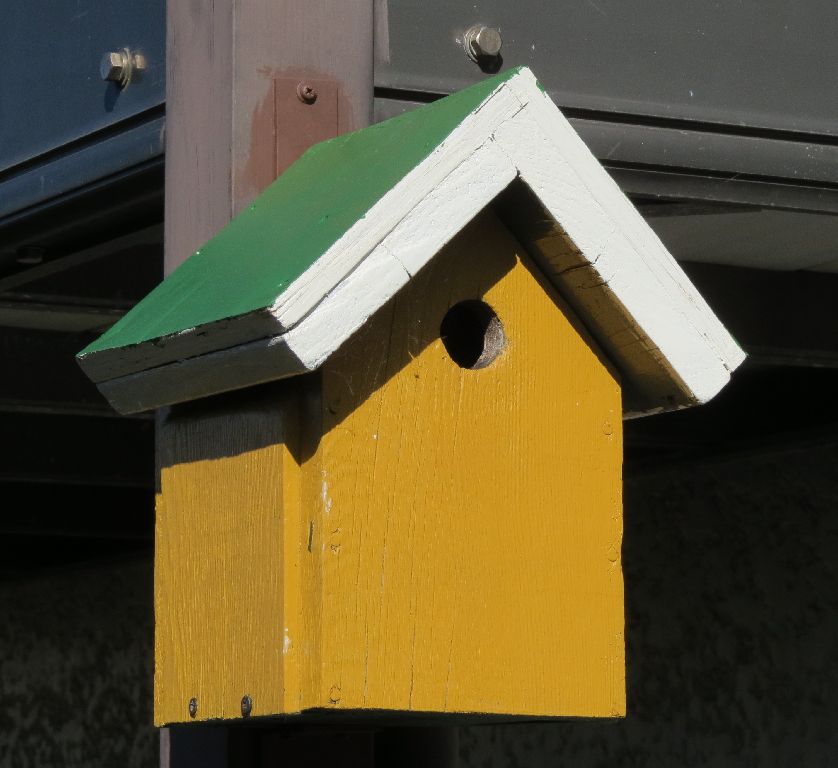
Leaves of tulip trees at a nearby park started turning yellow.
As shijyu-kara (a kind of tits) seem to have retuned to our area, their bird-house was again mounted on the usual place after applying some repair on its roof.
Shijyukara do not use bird-house except for the April - May breeding period.
Since they do not seem to use it even at the severest winter period, there must be more nice places to roost.
Still, when autumn comes, they also come to look into the bird-house, and sometimes go inside and exit. They look like enjoying such visits.
=2014-11-04 tue/canon ixi digi55, 2014-11-14 fri/canon ps sx40hs=
84. Another tiny autumn
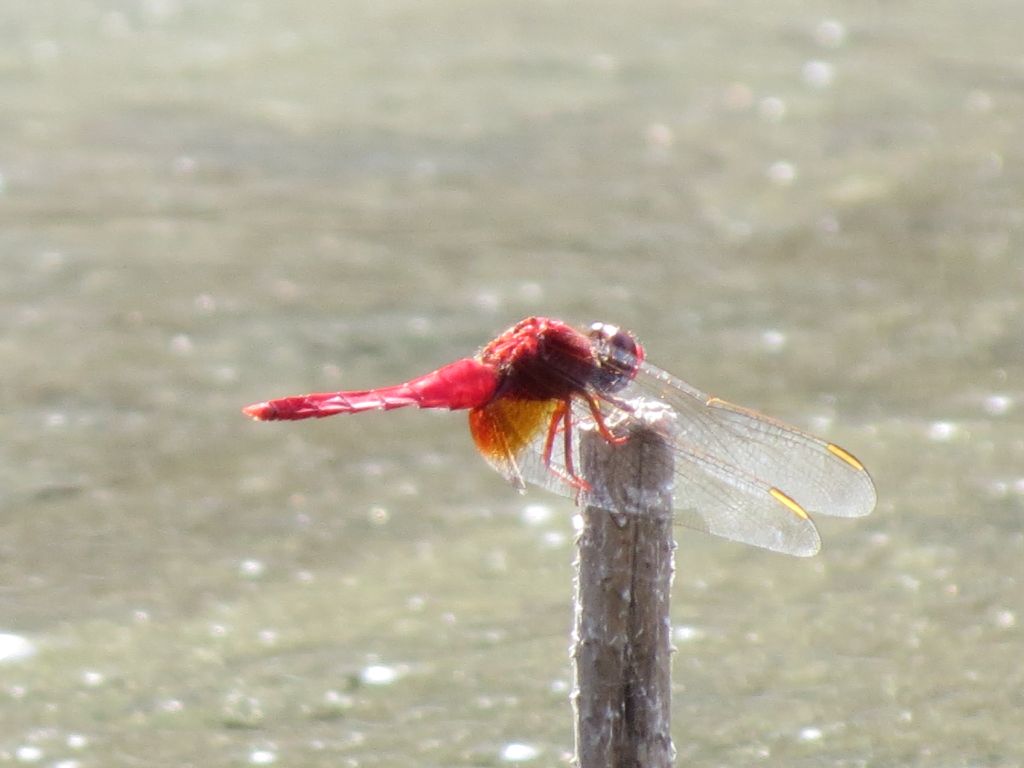 Shoujyou dragonfly.
Shoujyou dragonfly.
At a pond in front of Ketien Temple in Inzai.
=2014-09-21 sun/canon ps sx40hs=
83. A tiny autumn found
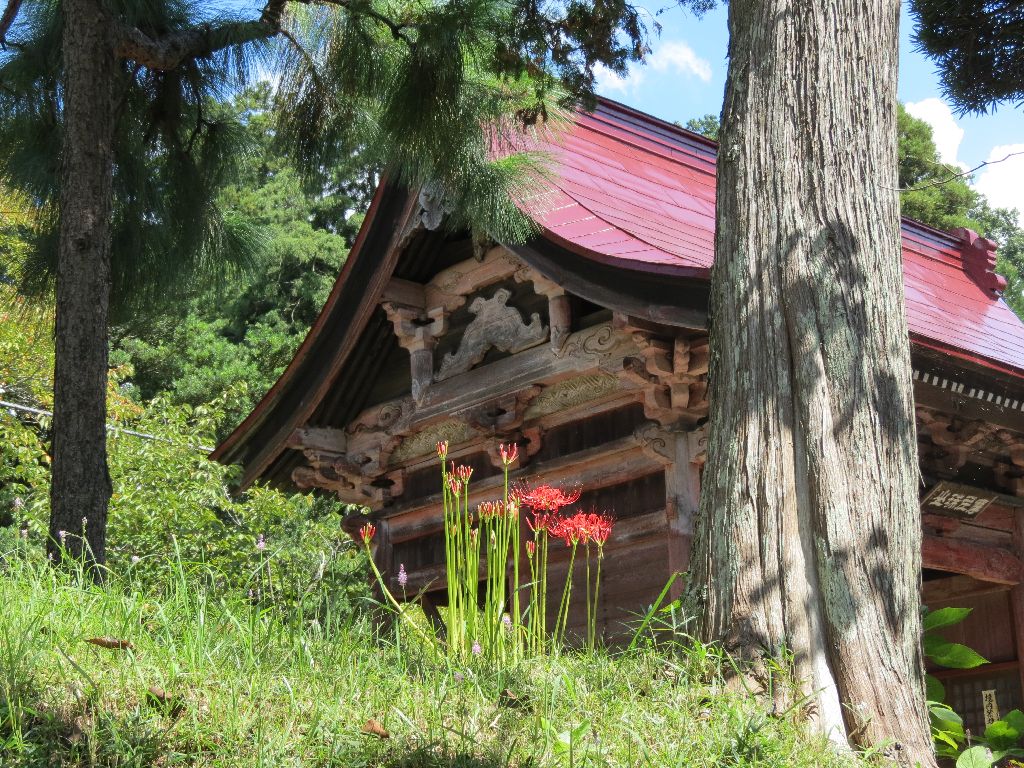 Hurricane lily has started blooming.
Hurricane lily has started blooming.
Looks like a week or so earlier than ordinary year.
At Matsu-mushi Temple in Inzai.
=2014-09-14 sun/canon ps sx40hs=
82. Space Exhibition Nr.3 / Salvaged LE-7
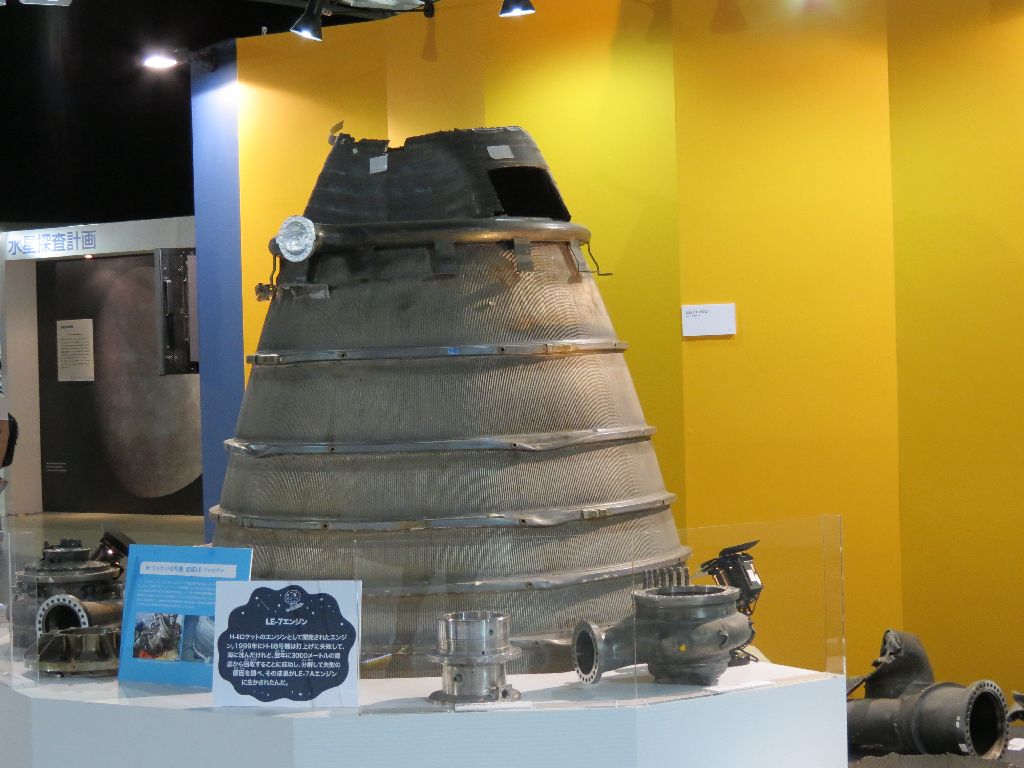 The photo is for LE-7 engine and its parts of H2 rocket No. 8 which was salvaged from the sea bottom, 3000 m deep, off the Chichijima island.
The photo is for LE-7 engine and its parts of H2 rocket No. 8 which was salvaged from the sea bottom, 3000 m deep, off the Chichijima island.
Precision of ballistic trajectory calculation, and the reliability of search and recovery tecnology.
Ummm, the works by professionals are amazing.
=2014-08-27 wed/canon ps sx40hs=
81. Antennas of Hayabusa 2
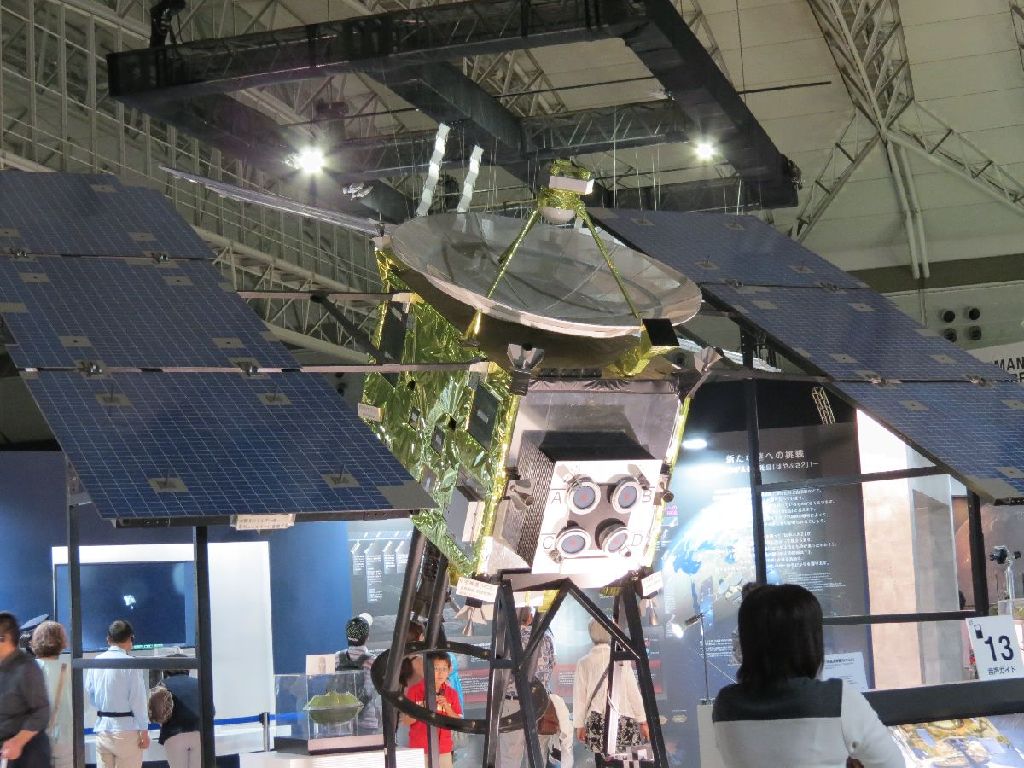
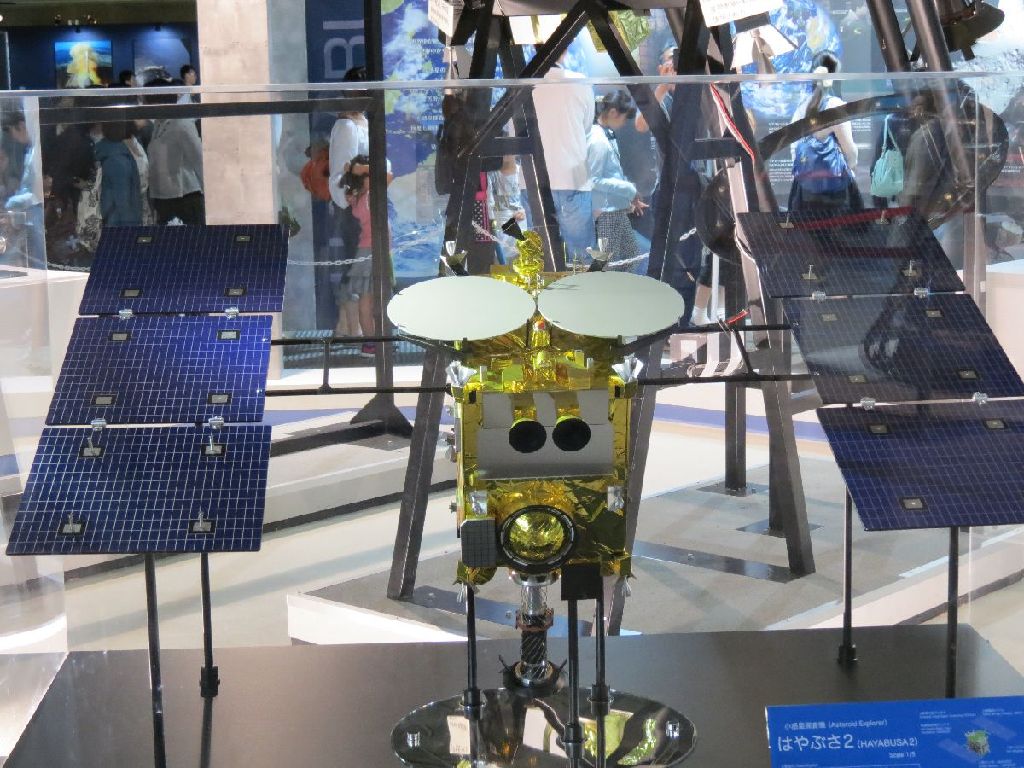
Models for Hayabusa and Hayabusa 2.
Major difference on their appearance is in their antennas. Hayabusa is equipped with a conventional parabola antenna. While Hayabusa 2 with 2 planar antennas, one is for X band, and the other for newly adopted Ka band.
It is said that the planar antenna is made by engraving many minute patterns based on computer calculations on a metal plate.
It does not look radio amateurs can casually make such antennas.
=2014-08-27 wed/canon ps sx40hs=
80. Apollo 11
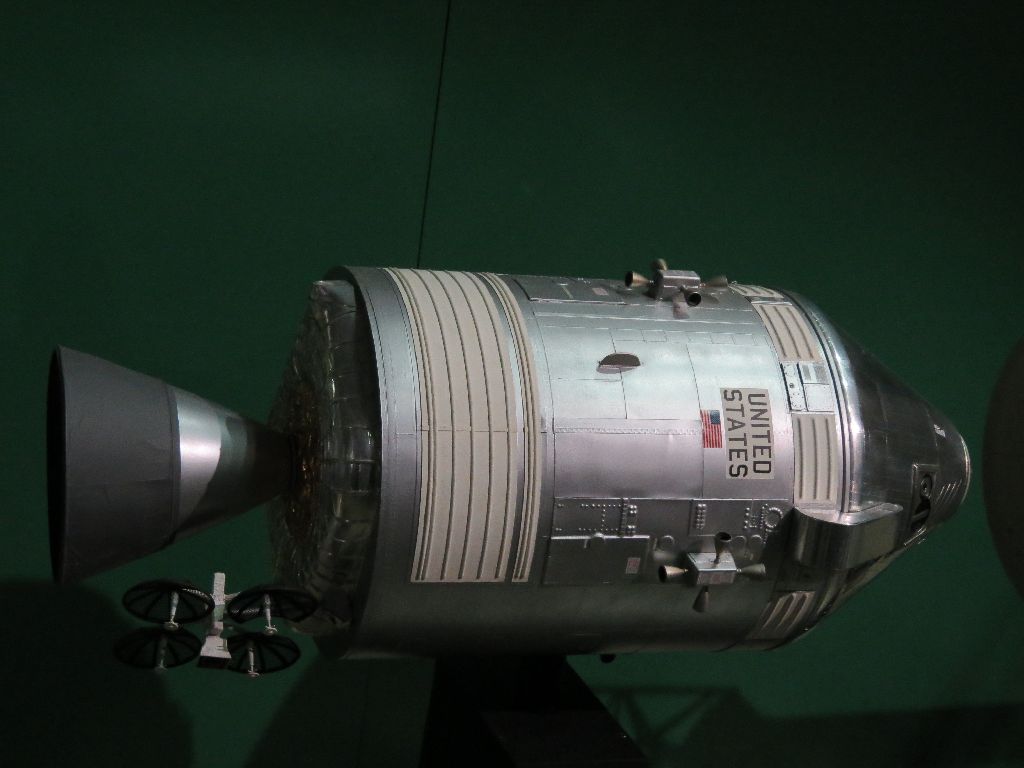
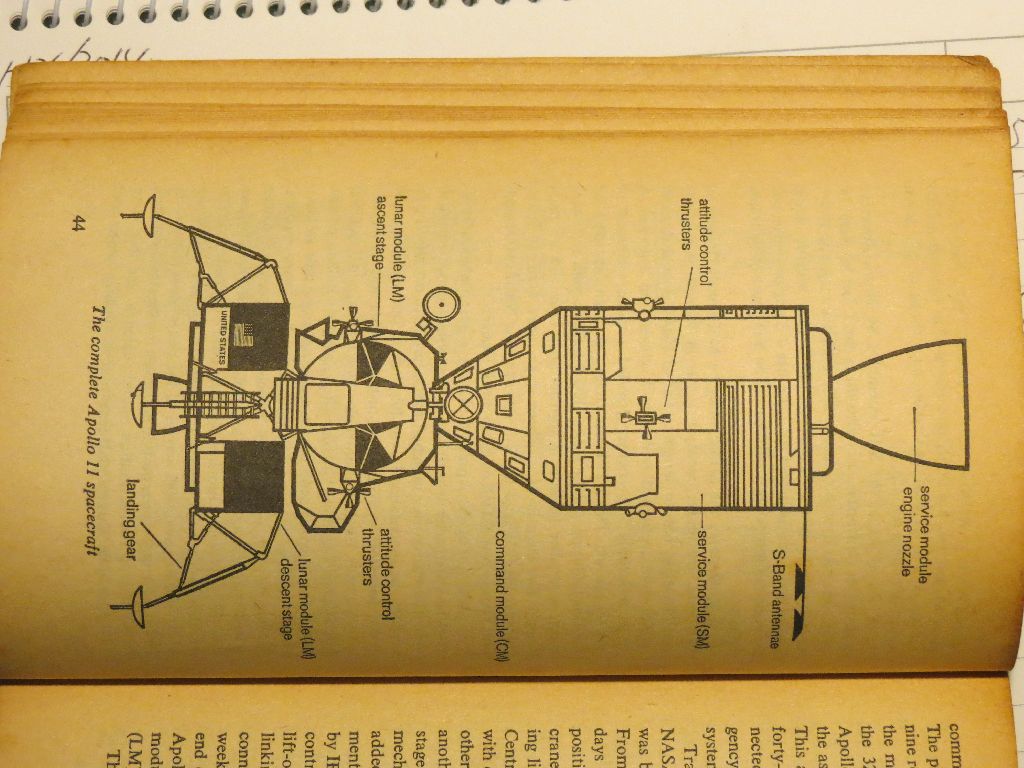
Visited Space Exhibition at Makuhari.
Could see a sizable number of spacecraft models in quite a while.
The photo is for one of such models, the service module of Apollo 11.
This reminds me of a book I repeatedly read at that time with a dictionary in hand. The right is an illustration in the book (P44 / The Invasion of the Moon 1969 / by Peter Ryan / Penguin Book).
=2014-08-27 wed/canon ps sx40hs=
89. Late autumn
 On my evening walk back home with my dog, Mt. Fuji unexpectedly appeared on the western horizon.
On my evening walk back home with my dog, Mt. Fuji unexpectedly appeared on the western horizon.From this area, it is to be seen through the skies above Koutou-ku, Meguro-ku, Sagamihara-si. A map of 1 : 4x10^5 indicates 33 cm between here and Mt. Fuji. Namely, the direct distance shall be 33x4x10^5 cm = 33x4x10^3 m = 132 km.
It is amazing the air quality improved so much.
=2014-11-27 thu/canon ixi digi55=
88. Wood statue
 Went to a nearby Iino Kannon (a temple dedicated to Kannon bodhisattva).
Went to a nearby Iino Kannon (a temple dedicated to Kannon bodhisattva).Though the Kannon image inside the hall can not be seen from outside, there esixt two carved wood figures, supposedly to serve the temple, at the right and left fronts. The photo is for the right one.
Although there might be an age-old reason to cover her head with a towel, a red beret or the like looks to fit her much more.。
=2014-10-17 /canon ixi digi55=
87. Sumida-river line
 Fine weather brought us to Sumida-river cruise.
Fine weather brought us to Sumida-river cruise.Water quality of the river seems getting better year by year.
=2014-11-23 sun/canon ixi digi55=
86. Hittuki-musi*


At this time of year, hittuki-musi invariably stick to my dog during walking.
This morning too, many of them stuck to his hair. Although I had tried to remove them all, still some were remaining.
 Five pieces were found and magnified through a lens.
Five pieces were found and magnified through a lens.=2014-11-16 sat/canon ixi digi55=
* Hittuki-musi literally means "sticking bugs". They, of course, are not bugs at all, but seeds of particular herbaceous plants. Nevertheless, we call them hittuki-musi, especially among boys.
85. Preparation for winter


Leaves of tulip trees at a nearby park started turning yellow.
As shijyu-kara (a kind of tits) seem to have retuned to our area, their bird-house was again mounted on the usual place after applying some repair on its roof.
Shijyukara do not use bird-house except for the April - May breeding period.
Since they do not seem to use it even at the severest winter period, there must be more nice places to roost.
Still, when autumn comes, they also come to look into the bird-house, and sometimes go inside and exit. They look like enjoying such visits.
=2014-11-04 tue/canon ixi digi55, 2014-11-14 fri/canon ps sx40hs=
84. Another tiny autumn
 Shoujyou dragonfly.
Shoujyou dragonfly.At a pond in front of Ketien Temple in Inzai.
=2014-09-21 sun/canon ps sx40hs=
83. A tiny autumn found
 Hurricane lily has started blooming.
Hurricane lily has started blooming.Looks like a week or so earlier than ordinary year.
At Matsu-mushi Temple in Inzai.
=2014-09-14 sun/canon ps sx40hs=
82. Space Exhibition Nr.3 / Salvaged LE-7
 The photo is for LE-7 engine and its parts of H2 rocket No. 8 which was salvaged from the sea bottom, 3000 m deep, off the Chichijima island.
The photo is for LE-7 engine and its parts of H2 rocket No. 8 which was salvaged from the sea bottom, 3000 m deep, off the Chichijima island.Precision of ballistic trajectory calculation, and the reliability of search and recovery tecnology.
Ummm, the works by professionals are amazing.
=2014-08-27 wed/canon ps sx40hs=
81. Antennas of Hayabusa 2


Models for Hayabusa and Hayabusa 2.
Major difference on their appearance is in their antennas. Hayabusa is equipped with a conventional parabola antenna. While Hayabusa 2 with 2 planar antennas, one is for X band, and the other for newly adopted Ka band.
It is said that the planar antenna is made by engraving many minute patterns based on computer calculations on a metal plate.
It does not look radio amateurs can casually make such antennas.
=2014-08-27 wed/canon ps sx40hs=
80. Apollo 11


Visited Space Exhibition at Makuhari.
Could see a sizable number of spacecraft models in quite a while.
The photo is for one of such models, the service module of Apollo 11.
This reminds me of a book I repeatedly read at that time with a dictionary in hand. The right is an illustration in the book (P44 / The Invasion of the Moon 1969 / by Peter Ryan / Penguin Book).
=2014-08-27 wed/canon ps sx40hs=
Copyright © 2013 JK1SXR/abemasa. All Rights reserved.